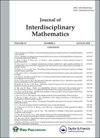弹性共轭梯度法求解迭代问题
IF 0.8
Q1 MATHEMATICS
引用次数: 0
摘要
本文利用共轭条件和二阶泰勒展开,给出了一个新的公式。与传统的共轭梯度方法不同,新公式利用了可用函数值和梯度的信息。讨论了该公式的全局收敛性,并给出了数值计算结果。本文章由计算机程序翻译,如有差异,请以英文原文为准。
Elastic conjugate gradient methods to solve iteration problems
Using the conjugacy condition and second-order Taylor expansion, we present a new formula in this paper. The novel formula, unlike traditional conjugate gradient approaches, utilizes information on available function values and gradients. The worldwide convergence findings of the formula are discussed, and numerical data show that this technique works.
求助全文
通过发布文献求助,成功后即可免费获取论文全文。
去求助
来源期刊

JOURNAL OF INTERDISCIPLINARY MATHEMATICS
MATHEMATICS-
CiteScore
2.70
自引率
23.50%
发文量
141
期刊介绍:
The Journal of Interdisciplinary Mathematics (JIM) is a world leading journal publishing high quality, rigorously peer-reviewed original research in mathematical applications to different disciplines, and to the methodological and theoretical role of mathematics in underpinning all scientific disciplines. The scope is intentionally broad, but papers must make a novel contribution to the fields covered in order to be considered for publication. Topics include, but are not limited, to the following: • Interface of Mathematics with other Disciplines • Theoretical Role of Mathematics • Methodological Role of Mathematics • Interface of Statistics with other Disciplines • Cognitive Sciences • Applications of Mathematics • Industrial Mathematics • Dynamical Systems • Mathematical Biology • Fuzzy Mathematics The journal considers original research articles, survey articles, and book reviews for publication. Responses to articles and correspondence will also be considered at the Editor-in-Chief’s discretion. Special issue proposals in cutting-edge and timely areas of research in interdisciplinary mathematical research are encouraged – please contact the Editor-in-Chief in the first instance.
 求助内容:
求助内容: 应助结果提醒方式:
应助结果提醒方式:


